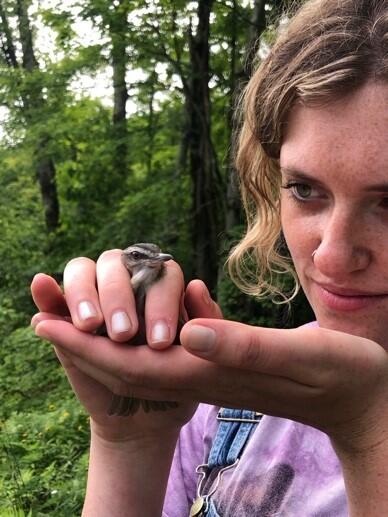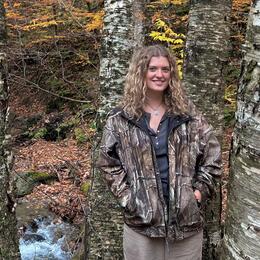Over the summer I have had the pleasure of spending many days at the Green Mountain Audubon Center in Huntington, Vermont. The property is a 250-acre designated Important Bird Area (IBA) with a brook, pond, fields, and mixed forests. This was also my year of birding, and let me tell you, I had no idea just how many birds lived in and migrated to Vermont! The annual “Birdathon” event in mid-May was an eye-opening experience. It was my first week on the job, and spending the day with my new coworkers and watching them call out bird after bird was something I’ll never forget. It would take me multiple minutes to locate any bird with my binoculars, and by the time I did, the team had already identified at least five more. It was such a cool experience and a great introduction to my summer. While driving back to my apartment I reflected on the incredible diversity of birds that call Vermont their home either seasonally or residentially, and just how special it is that the landscape can fulfill each of their unique needs.
As a Healthy Forest Conservation Intern, most of my time at the Green Mountain Audubon Center was spent in their Forestry for the Birds Demonstration site. This site is an evolving, living display of how silviculture practices with birds in mind can produce sustainable, diverse landscapes. In the demonstration forest you can see patch cuts, single tree crop release, and girdling techniques used to open the canopy. These forest management practices allow the forest to restore its structural diversity by providing space and light for the understory and midstory to regenerate and grow into a complex structure.
The reason why active forest management and silvicultural practices are especially important in Vermont is due to the history of land use throughout the state. During the 1800s practically all old growth forest was cleared for agricultural use. The reforestation of Vermont only started a little over a century ago. This means that almost all the forest present in Vermont now is relatively young and even-aged. Although the uniform forest may fulfill a human ideal of aesthetic, it’s not great for the forest’s health. The main way that diversity will increase without management is when trees fall from weather events or die of old age. This will happen eventually, but with the threat of climate change the need for healthy diverse forests is greater than ever. So, to help facilitate growth and diversity, we can implement forest management practices like the ones at the Green Mountain Audubon Center.
Diversifying the forest composition and structure creates many opportunities for birds as well. During a demonstration site walk with Vermont Youth Conservation Corps (VYCC), my mentor Tim Duclos summed it all up when he said, “different birds like different things, so we like to do a lot of different things for different birds.” One of my favorite migratory birds to spot at the Green Mountain Audubon Center was the Eastern Wood-Pewee. These birds feed on mostly insects, and love using canopy gaps for hunting. They enjoy having mature forest and openings/young forest, making the demonstration quite a nice place to go for breeding in the spring. Hearing their song is a reminder and celebration that their needs are being met, fulfilling the requirements for that habitat that many other kinds of wildlife thrive in.
Overall, this summer has taught me the beauty of conservation work through the lens of birds and forest management. Not only did I fall in love with the silly little character and song of each bird, but I also find bird conservation work incredibly hopeful. As an environmental studies major at UVM, it is hard to not let climate anxiety get the best of me. Working at Audubon Vermont I got to see tangible evidence that we can have positive impacts on the environment around us. Seeing migratory birds come back year after year, watching saplings start to grow in deliberate canopy gaps, finding bird cavities in snags intentionally left in the landscape, and feeling the energy of the forest around me gave me the inspiration and connection I need to finish my last year of school. This is just the start of my journey with birds, and I can’t wait to see where it will take me next.








